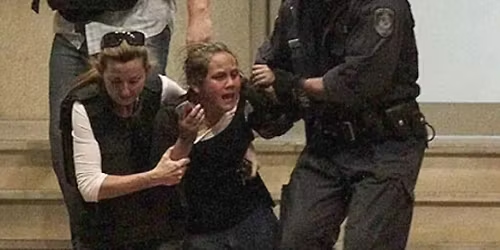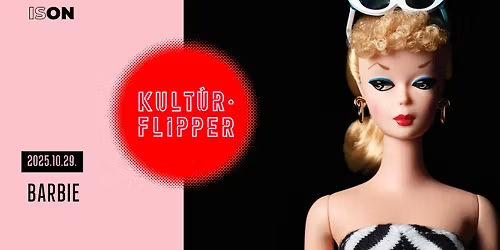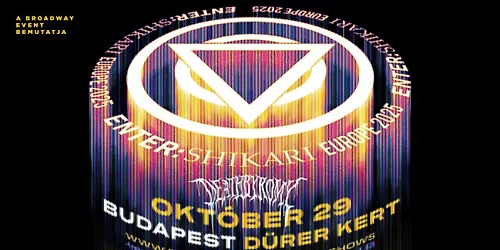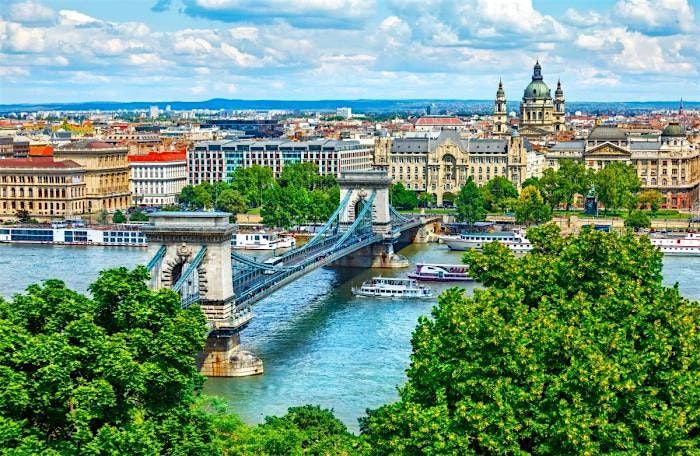A létezés finom rétegei a láthatóság peremén – BAGALA Orsolya és KUN Fruzsina
Schedule
Wed, 29 Oct, 2025 at 07:00 pm
UTC+01:00Location
Képíró utca 5., Budapest, Hungary | Budapest, BU

Kurátor: Kocsis Katica esztéta
Megnyitó: 2025. 10. 29. 19:00
Helyszín: yes! gallery | Budapest, Képíró utca 5.
A yes! gallery örömmel mutatja be Bagala Orsolya és Kun Fruzsina közös kiállítását, amelyen az alkotók tünékeny, érzékeny és intim portréin van a hangsúly.
A most bemutatott munkák a (női) létezés illékonyságának és finom érzelmi rétegeinek metaforái. Kompozícióikban a test, az anyaság, a gyermeki emlékezet és az identitás kérdései az elmúlás és újjászületés ciklikus tapasztalatával fonódnak össze. Bár különböző élethelyzetekből és művészeti háttérből érkeznek, ezen műveiket az anyag és a belső világ közötti párbeszéd határozza meg: a múlandó, efemer gesztusok személyes történeteket és érzelmi lenyomatokat tesznek láthatóvá.
A két művész ezúttal az intimitás tereiben dolgozik: műveik intenzív emocionális jelenlétet hordoznak. A víz és a pigment viszonya a kontrollálhatatlan és a tudatos közötti egyensúlyt közvetíti – azt a határhelyzetet, ahol a festés folyamata a belső lelki történések természetes kivetülésévé válik.
Kun Fruzsina 2016-os „babás” Makacs foltok című sorozata a gyermeki énhez való viszony érzékeny feltérképezése. A képek a gyermekkori emlékek felfejtésének folyamatában születtek: a festés során a múlt képei fokozatosan előtűntek, majd emlékké és megértéssé alakultak. Az akvarellek és tusrajzok nem pusztán emlékidézések, hanem a belső gyermekkel való találkozás lenyomatai – egyszerre bájosak és nyugtalanítóak. A finom, elmosódó formák a gyengédség és a szorongás határán egyensúlyoznak, miközben a festői gesztus a feldolgozás és az elengedés eszközévé válik.
Bagala Orsolya papíralapú akrilfestményei a mindennapi anyagok újraértelmezésén keresztül reflektálnak a női szerepekre és a láthatatlanság tapasztalatára. Pizzásdobozra, papírtáskára vagy kartonra festett portréi az otthon világából táplálkoznak, mégis túl is mutatnak rajta. A választott anyagok és kompozíciók a gondoskodás és az anyasághoz kapcsolódó jelenlét szimbólumai, ugyanakkor éppen a festés aktusa az, ami az alkotót kiszabadítja a hagyományos női szerepek korlátai közül. Az elhasznált, hétköznapi tárgyak az alkotás során személyes és érzelmi lenyomatokká alakulnak át – a női láthatatlanság tapasztalatából fakadó, mégis felszabadítóan őszinte művészi állításokká.
Mindkét művész munkáiban hangsúlyosan megjelenik az anyasággal járó láthatatlanság, valamint a gondoskodás és az alkotói szabadság közti egyensúly keresése. Az így létrejövő képek egyszerre személyes vallomások és finom társadalmi állítások arról, hogyan lehet megküzdeni a láthatatlanság tapasztalatával – hogyan alakítható át az elhallgatottság és a háttérbe szorítottság érzése teremtő energiává. Bár Bagala Orsolya és Kun Fruzsina életútja eltér – más országban élnek, más kulturális közegben alkotnak –, egyidős nőkként mégis közös generációs tapasztalatot hordoznak. A külföldre kerülés, a gyökerekből való kimozdulás, valamint a helyhez kötöttség és a kulturális beágyazottság szétválása izgalmas értelmezési réteget ad ehhez a kiállításhoz. Talán épp ez a távolság és párhuzam teszi lehetővé, hogy munkáik egy közös térben mégis egymásra találjanak – ahol a személyes történetekből kirajzolódik egyfajta kollektív tapasztalat. A láthatatlansággal való küzdelem ugyanakkor nem csupán női tapasztalat: a művek mögött ott húzódik az általános emberi lét törékenysége is – a vágy, hogy észrevegyenek, megértsenek, kapcsolódhassunk másokhoz.
A létezés finom rétegei a láthatóság peremén cím nemcsak a képeken testet öltő, efemer, lebegő alakokra utal, hanem arra a törékeny, átmeneti állapotra is, amikor a sajátos női tapasztalat, valamint a másság, az idegenség, a kívülállás általános emberi érzése végre láthatóvá válik a művészi alkotás folyamatán keresztül. Bagala és Kun festészete a jelenlét és hiány, a test és psziché, a trauma és transzformáció határain mozog, ahol a festészet nem pusztán dokumentál, hanem érzékelhetővé teszi azt a folytonos transzformációt, amelyet mindannyian megtapasztalunk valamilyen formában.
///
The Subtle Layers of Being on the Edge of Visibility
yes! gallery is delighted to present the joint exhibition of Orsolya Bagala and Fruzsina Kun, which centres on the artists’ transient, sensitive, and intimate portraits.
The works on display serve as metaphors for the ephemerality of (female) existence and its delicate emotional strata. In their compositions, themes of the body, motherhood, childhood memory, and identity intertwine with the cyclical experience of passing and renewal. Although the artists come from different life situations and artistic backgrounds, their works are united by a dialogue between material and inner world: fleeting, ephemeral gestures render personal narratives and emotional imprints visible.
On this occasion, both artists explore the realms of intimacy; their works convey a profound emotional presence. The interplay of water and pigment evokes a balance between the uncontrollable and the deliberate – a liminal state in which the act of painting becomes a natural projection of inner psychological processes.
Fruzsina Kun’s 2016 series Stubborn Stains, with its “baby” motifs, offers a sensitive mapping of her relationship to the child self. The paintings emerged through the process of unravelling childhood memories: as the artist painted, images from the past gradually surfaced, transforming into recollection and understanding. The watercolours and ink drawings are not mere acts of remembrance, but traces of encounters with the inner child – at once tender and disquieting. Their subtle, blurred forms hover between gentleness and anxiety, while the painterly gesture becomes an instrument of processing and release.
Orsolya Bagala’s acrylic paintings on paper reinterpret everyday materials to reflect upon female roles and the experience of invisibility. Her portraits, painted on pizza boxes, paper bags, or cardboard, draw nourishment from the domestic sphere, yet simultaneously transcend it. The chosen materials and compositions symbolise the presence associated with care and motherhood, while the very act of painting serves as a means of liberation from the constraints of traditional female roles. Through the creative process, used and ordinary objects are transformed into personal and emotional imprints – artistic statements born of the experience of female invisibility, yet imbued with a liberating honesty.
In the practice of both artists, the invisibility that accompanies motherhood, and the search for equilibrium between care and creative freedom, occupy a central place. The resulting images operate both as personal confessions and as subtle social commentaries on the ways in which one might confront the experience of invisibility – how silence and marginalisation may be transmuted into generative energy. Although Orsolya Bagala and Fruzsina Kun live in different countries and work within distinct cultural contexts, as women of the same generation they share a common experiential ground. The disjunction between displacement and rootedness, between belonging and detachment, adds a compelling interpretive layer to the exhibition. It is perhaps precisely this distance and parallelism that allows their works to meet within a shared space – where personal narratives unfold into a form of collective experience.
The struggle with invisibility, however, is not exclusively a female one: beneath these works lies the broader fragility of human existence – the yearning to be seen, to be understood, and to connect with others.
The Subtle Layers of Being on the Edge of Visibility alludes not only to the ephemeral, floating figures that take shape within the paintings, but also to that fragile, transitional state in which specifically female experience – together with the universal sensations of otherness and estrangement – becomes visible through the artistic process. Bagala’s and Kun’s painterly practice moves along the thresholds of presence and absence, body and psyche, trauma and transformation, where painting does not merely document but renders perceptible the continuous metamorphosis that, in some form, we all undergo.
Where is it happening?
Képíró utca 5., Budapest, HungaryEvent Location & Nearby Stays:


















